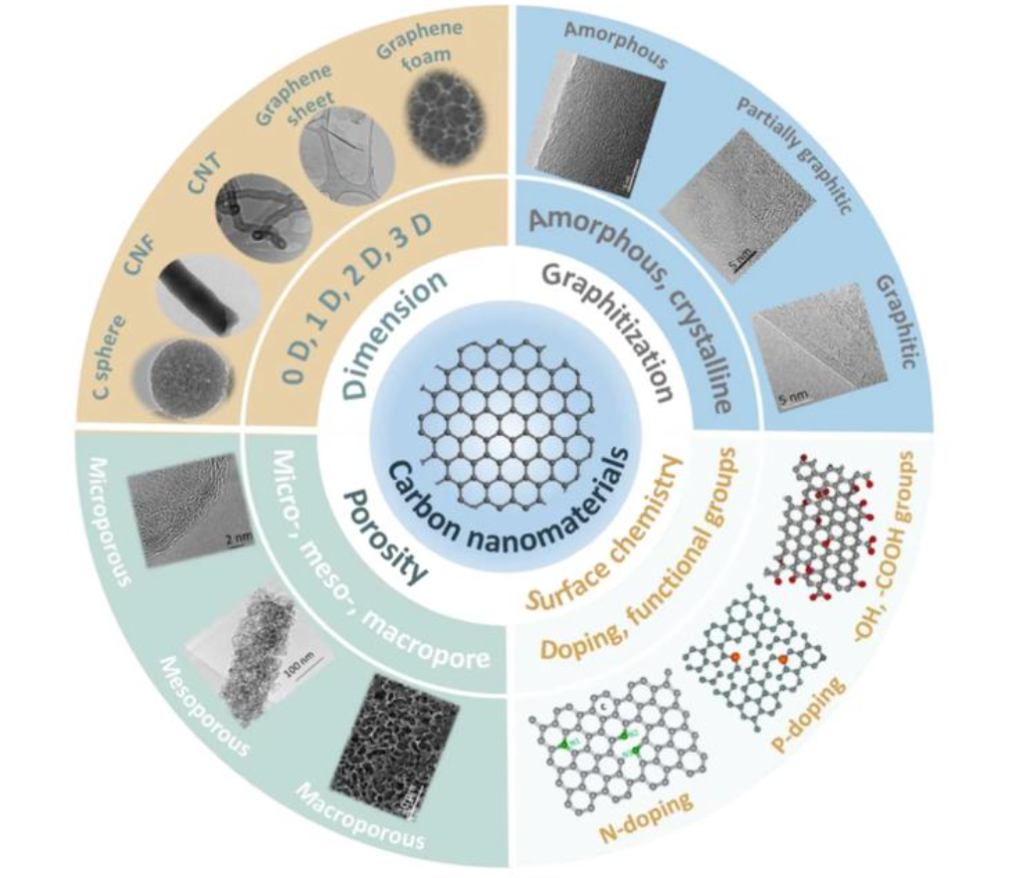Exploring the Diversity of Carbon Materials: Types, Advantages, and Wide Applications
Introduction
Carbon materials have emerged as one of the most versatile and revolutionary materials of the 21st century. Their diverse structures, ranging from diamond and graphite to advanced nanostructures like graphene and carbon nanotubes, provide unparalleled physical and chemical properties. These materials are driving innovation across industries, including energy, electronics, healthcare, and environmental sustainability. This article delves into the types, advantages, and applications of key carbon materials, with an emphasis on their tremendous growth potential.

Types of Carbon Materials
1. Graphene
Graphene, a single layer of carbon atoms arranged in a two-dimensional honeycomb lattice, has extraordinary mechanical, electrical, and thermal properties. Key characteristics include:
- High electrical conductivity: Ideal for electronic devices.
- Exceptional strength: Stronger than steel but lightweight.
- Superior thermal conductivity: Essential for heat dissipation in electronics.
- Large surface area: Useful in energy storage and catalysis.
2. Carbon Nanotubes (CNTs)
Carbon nanotubes are cylindrical structures composed of rolled-up graphene sheets. They come in two primary forms: single-walled (SWCNTs) and multi-walled (MWCNTs). Advantages include:
- High tensile strength: Perfect for structural reinforcement.
- Electrical and thermal conductivity: Used in advanced electronics and thermal management.
- Chemical stability: Suitable for harsh environments.
3. Activated Carbon
Activated carbon is a porous material with high adsorption capacity. It is typically produced by treating carbon-rich materials, such as coal or biomass, with heat or chemicals. Features include:
- High porosity: Enables effective adsorption of gases and liquids.
- Chemical inertness: Applicable in various environments.
- Cost-effectiveness: Widely used in industrial processes.
4. Graphite
Graphite is a crystalline form of carbon with layered structures. It is widely used due to:
- High lubricity: Utilized in mechanical applications.
- Thermal and electrical conductivity: Essential for batteries and electrodes.
- Stability under extreme conditions: Suitable for high-temperature applications.
5. Carbon Fibers
Carbon fibers are lightweight, high-strength materials made by carbonizing polymers like polyacrylonitrile (PAN). Their attributes include:
- High stiffness: Ideal for aerospace and automotive sectors.
- Corrosion resistance: Extends product life in harsh environments.
- Lightweight nature: Improves fuel efficiency in transportation.
Advantages of Carbon Materials
The unique properties of carbon materials provide significant advantages:
- Versatility: Applicable in diverse industries, from electronics to healthcare.
- Sustainability: Many carbon materials can be derived from renewable resources.
- Cost-Effectiveness: Innovations in production methods are reducing costs.
- Scalability: Advancements in manufacturing enable mass production.
Applications Across Industries
1. Energy
- Batteries and Supercapacitors: Graphene and carbon nanotubes improve energy density, charge rates, and lifespans of energy storage devices.
- Fuel Cells: Carbon materials serve as efficient catalysts and electrode materials.
- Solar Cells: Enhancements in light absorption and charge transport boost efficiency.
2. Electronics
- Flexible Displays: Graphene’s flexibility and transparency revolutionize display technology.
- High-Speed Transistors: Carbon nanotubes enable faster electronic components.
- Thermal Management: Carbon materials dissipate heat in compact electronic devices.
3. Environmental Sustainability
- Water Purification: Activated carbon removes contaminants effectively.
- Air Filtration: Adsorption of harmful gases ensures cleaner air.
- Carbon Capture: Graphene and other carbon materials are being explored for capturing CO2 from the atmosphere.
4. Healthcare
- Drug Delivery: Nanostructured carbon materials can carry drugs directly to targeted cells.
- Medical Imaging: CNTs enhance imaging techniques like MRI.
- Biosensors: Graphene-based sensors detect diseases with high sensitivity.
5. Construction and Aerospace
- Concrete Reinforcement: Adding graphene increases strength and durability.
- Lightweight Composites: Carbon fibers reduce weight in aerospace and automotive applications.
- Thermal Insulation: Graphite foams provide excellent insulation.
Development Potential
The growth potential of carbon materials is immense, driven by advancements in production methods and rising demand for high-performance materials:
1. Cost Reduction and Scalability
Technological innovations are making carbon materials more affordable. For instance, large-scale production of graphene using chemical vapor deposition (CVD) has lowered costs significantly. Similar breakthroughs are being pursued for CNTs and carbon fibers.
2. Integration with Emerging Technologies
Carbon materials are becoming integral to emerging technologies like artificial intelligence (AI), renewable energy, and the Internet of Things (IoT). For example, graphene’s use in AI chips enhances processing speeds while reducing energy consumption.
3. Sustainability Trends
As industries move toward sustainability, carbon materials derived from biomass or waste are gaining traction. Bio-based graphene and activated carbon are examples of environmentally friendly alternatives.
4. Government and Private Investment
Governments and private entities worldwide are investing heavily in carbon material research. In China, the United States, and Europe, initiatives to develop advanced materials are accelerating breakthroughs.
Challenges and Opportunities
Despite their potential, carbon materials face challenges:
- High Initial Costs: Advanced carbon materials like graphene remain expensive compared to traditional materials.
- Complex Manufacturing: Producing high-quality carbon materials at scale requires sophisticated techniques.
- Regulatory Hurdles: Standardizing production and usage is essential for market growth.
However, these challenges also present opportunities for innovation. Companies that develop cost-effective, scalable manufacturing methods and address regulatory concerns will gain significant market advantages.
Conclusion
Carbon materials represent a cornerstone of modern and future technologies. From graphene’s revolutionary properties to the practicality of activated carbon, each type offers unique benefits and applications. As industries seek advanced, sustainable, and high-performance materials, carbon materials are poised to play a transformative role. With ongoing research and development, their growth potential is virtually limitless, ensuring a bright future for these remarkable materials.

